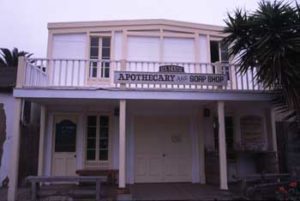 By including tribal cultural resources early in the California Environmental Quality Act (CEQA) process, the legislature intended to ensure that local and Tribal governments, public agencies, and project proponents would have information available, early in the project planning process, to identify and address potential adverse impacts to tribal cultural resources. By taking this proactive approach, the legislature also intended to reduce the potential for delay and conflicts in the environmental review process. These new rules apply to projects that have a notice of preparation for an environmental impact report or negative declaration or mitigated negative declaration filed on or after July 1, 2015. The new provisions in the Public Resources Code proscribe six specific steps and timelines governing the notice and consultation process. Those steps are summarized below.
By including tribal cultural resources early in the California Environmental Quality Act (CEQA) process, the legislature intended to ensure that local and Tribal governments, public agencies, and project proponents would have information available, early in the project planning process, to identify and address potential adverse impacts to tribal cultural resources. By taking this proactive approach, the legislature also intended to reduce the potential for delay and conflicts in the environmental review process. These new rules apply to projects that have a notice of preparation for an environmental impact report or negative declaration or mitigated negative declaration filed on or after July 1, 2015. The new provisions in the Public Resources Code proscribe six specific steps and timelines governing the notice and consultation process. Those steps are summarized below.
Step 1) The Native American Heritage Commission (NAHC) will provide each Tribe in California with a list of all public agencies that may be lead agencies under CEQA within the geographic area with which the tribe is traditionally and culturally affiliated, the contact information of those public agencies, and information on how the Tribe may request consultation. This list must be provided on or before July 1, 2016 (Pub. Resources Code, § 5097.94 (m)).
Step 2) If a tribe wishes to be notified of projects within its traditionally and culturally affiliated area, the tribe must submit a written request to the relevant lead agency (Pub. Resources Code, § 21080.3.1 (b).), requesting to be added to the lead agency’s AB 52 Consultation List.
Optional Step 2A-Some lead agencies might like to proactively establish an AB 52 Consultation list, rather than wait to be contacted by Tribes individually starting in 2016.
Step 3) Within 14 days of the lead agency determining that a project application is complete, or that the lead agency will undertake a project (via a notice of preparation for an environmental impact report, negative declaration or mitigated negative declaration filed on or after July 1, 2015), the lead agency must provide formal notification, in writing, to the Tribes that have requested notification of proposed projects as described in step 2, above, on the AB 52 Consultation List. That notice must include a description of the project, its location, and must state that the tribe has 30 days to request consultation.
Step 4) If it wishes to engage in consultation on the project, each AB 52 Consultation List Tribe must respond to the lead agency within 30 days of receipt of the formal notification described in step 3, above. The Tribe’s response must designate a lead contact person. If the Tribe does not designate a lead contact person, or designates multiple people, the lead agency shall defer to the individual listed on the contact list maintained by the NAHC. If no Tribes request consultation within 30 days of receipt of the lead agency’s formal notification, then the AB 52 process ends and steps 5 and 6 below are not required.
Step 5) The lead agency must begin the consultation process with the tribes that have requested consultation within 30 days of receiving the request for consultation.
Step 6) Consultation concludes when either: 1) the parties agree to measures to mitigate or avoid a significant effect, if a significant effect exists, on a tribal cultural resource, or 2) a party, acting in good faith and after reasonable effort, concludes that mutual agreement cannot be reached. (Pub. Resources Code, § 21080.3.2 (b)(1) & (2).) Note that consultation can also be ongoing throughout the CEQA process.
Photo Credit: Coyote Mountain, Anza Borrego courtesy of artist Mary-Austin Klein. Check out her paintings. They’re amazing!


 California State Public Resources Code (PRC) 5024 requires that all state agencies preserve and maintain state-owned historical resources. Section 5024.5 outlines the process of meeting this mandate. The process gives the State Historic Preservation Officer (SHPO) the authority to review the efforts made by state agencies toward compliance with this law. State agencies must work with the SHPO to show that they are protecting and maintaining the historical resources (the term includes significant prehistoric, historic, ethnographic, and traditional cultural resources) on their Master List and that no development or maintenance projects will adversely impact those resources.
California State Public Resources Code (PRC) 5024 requires that all state agencies preserve and maintain state-owned historical resources. Section 5024.5 outlines the process of meeting this mandate. The process gives the State Historic Preservation Officer (SHPO) the authority to review the efforts made by state agencies toward compliance with this law. State agencies must work with the SHPO to show that they are protecting and maintaining the historical resources (the term includes significant prehistoric, historic, ethnographic, and traditional cultural resources) on their Master List and that no development or maintenance projects will adversely impact those resources.